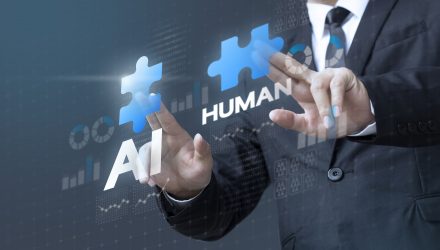“By employing a system such as AI, we can attempt to mitigate those types of biases,” said Staines.
“This idea that systematizing the investment process and taking human emotion out of the day-to-day decision making is supplemented by having access to data,” Dayha added.
JP Morgan’s Use of AI
JP Morgan has certainly been realizing the benefits of AI through their own processes. One way is through their quantitative and arbitrage teams that can filter through copious amounts of data to identify opportunities, such as mergers and acquisitions.
AI technology has also permeated other parts of JP Morgan’s business in the broader asset management areas. Moreover, the technology is making its way into the actual products themselves–ETFs.
“What’s most exciting to me about this is it’s no longer just used in people’s portfolios, it’s available in ETFs,” said Dahya.
“To me, it’s the truest form of democratization that this type of technology is finding its way into (investment) vehicles that anybody can buy with a click of a button,” said Dahya.
Furthermore, JP Morgan and the whole financial sector is barely scratching the surface in terms of incorporating AI into their business processes. As the technology continues to develop and fine-tune its strategy, more widespread adoption is on the horizon.
For Staines, who has a doctorate in machine learning, this has been a long time coming.
“As with many academic fields, theoreticians get way ahead over practitioners in this space, so what we’re seeing now is a realization of all the ideas we in academdia were proposing many decades ago,” said Staines.
To listen to the full podcast, click here.
For more market trends, visit ETF Trends.
